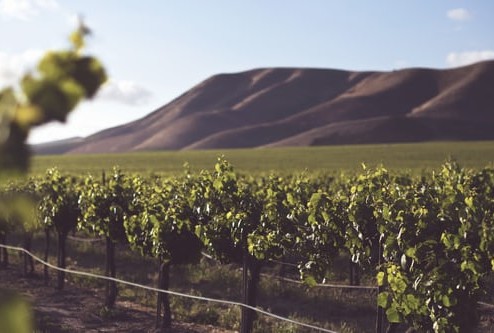Creating your own Gardening ‘Microclimate’

I love living here in these mountains and the adventures of trying to grow food that comes with that.
I’m writing this early on in spring, well that’s what it says but last week was really cold so felt more like winter. I wonder if I should shift my spring start mind to the ‘Vernal Equinox’ around 21/22 September rather than the 1st.
While this was a decent winter, winters generally, however are definitely trending towards being warmer. This winter was a one of two halves. It felt very cold in June and July and then the end of August was quite warm. That said, I think we’re still a long way from Avocado’s and citrus orchards.
The extremes of weather lead me to the topic of creating your own gardening ‘Microclimate’. It’s a word I rattle on about all the time and rightly so, when we’ve had barmy winters days followed by harsh cold snaps with snow on the ground.
So depending on the depth of your pocket, and possibly whether you’re renting or own a property or you have an allotment here’s 9 ways you can up spec your own microclimate to even out the highs and lows of the coming growing season.
- Frost Cloth. With the use of homemade or store bought hoops it’s easy to cover a bed with frost cloth. Having a cloth changes the temperatures under the cloth by lifting it anywhere from 2 to 6 degrees warmer than the surrounding temperature. I also use frost cloth during the summer months to grow tender leafy greens, asian greens and some brassicas like broccoli.
a) Build a frame and cover it with windbreak.
b) Using up materials you’ve begged and borrowed, build a more permanent boxy structure. This will have the same effect as the frost cloth. It also has the added bonus of keeping white butterflies at bay in the summer months. - Cold Frames. Somewhere in the New Zealand gardening psyche we forgot all about semi permanent cold frames. Think box bed with a window on top that can be opened up during the heat of the day. Our gardening ancestors have been using these successfully for hundreds of years. A great way to get a head start on snowy spring mornings.
- Raised your garden beds. The higher you come up, the further Jack frost has to climb to get to your veggies. The soil in raised beds also warms up quicker and the temperature of the soil is a key factor in seed germination. Raised beds in combination with the hoops, frost cloth and you will start seeing differences.
- Black plastic. Old silage plastic or recycled builders’ black plastic can be used to heat up the soil. Push any mulch to the side, cover the bed with the black plastic and leave for a couple of weeks before removing and sowing seed directly.
- Recycled glass house. There’s a lot of windows sitting around propped up against someone’s wall for a one day- someday project. A great project for you would be to build yourself a glasshouse for next to nothing. You might even score a load of double glazed windows. Remember, you don’t need any glass on the south side, this could be a thermal mass of bricks or concrete of something similar to soak up the heat during the day and let it all out at night keeping your veggies a little toastier.
- Tunnel house or glass house. These start to cost a few dollars but will be one of the best investments you make for your garden. Always go a little bigger and wider than you think you need. This space becomes one of your most productive. Great for growing tomatoes, eggplants, cucumbers, winter greens, early strawberries and so on.
Thermal mass placed on the south side of a garden really makes a huge difference with random frosts that come out of nowhere during the season. This could be a gabion rock filled wall, or black/blue barrels of water, even a fence or a wall of a house. Plants that need extra heat like corn and pumpkins are ideal in these spaces.
The western side of a tunnel house or glass house is perfect for a veggie bed. The bed receives reflective and radiant heat from the structure. It will be one of the last places you get a frost outside, great for those longer season frost tender growing plants.
Lastly there is nothing quite like observation. Get outside on those cold frosty mornings, and see where is it warmer and where is it colder in your growing zone??
Dr Compost aka Ben Elms is a permaculture and gardening expert who’s been operating in the unusual Central Otago climate for over 20 years. Funded by QLDC and delivered by Wanaka Wastebusters, the Dr Compost project aims to reduce organic waste going to landfill.
Got a question? Check out @drcompost on Facebook or benelms.com









